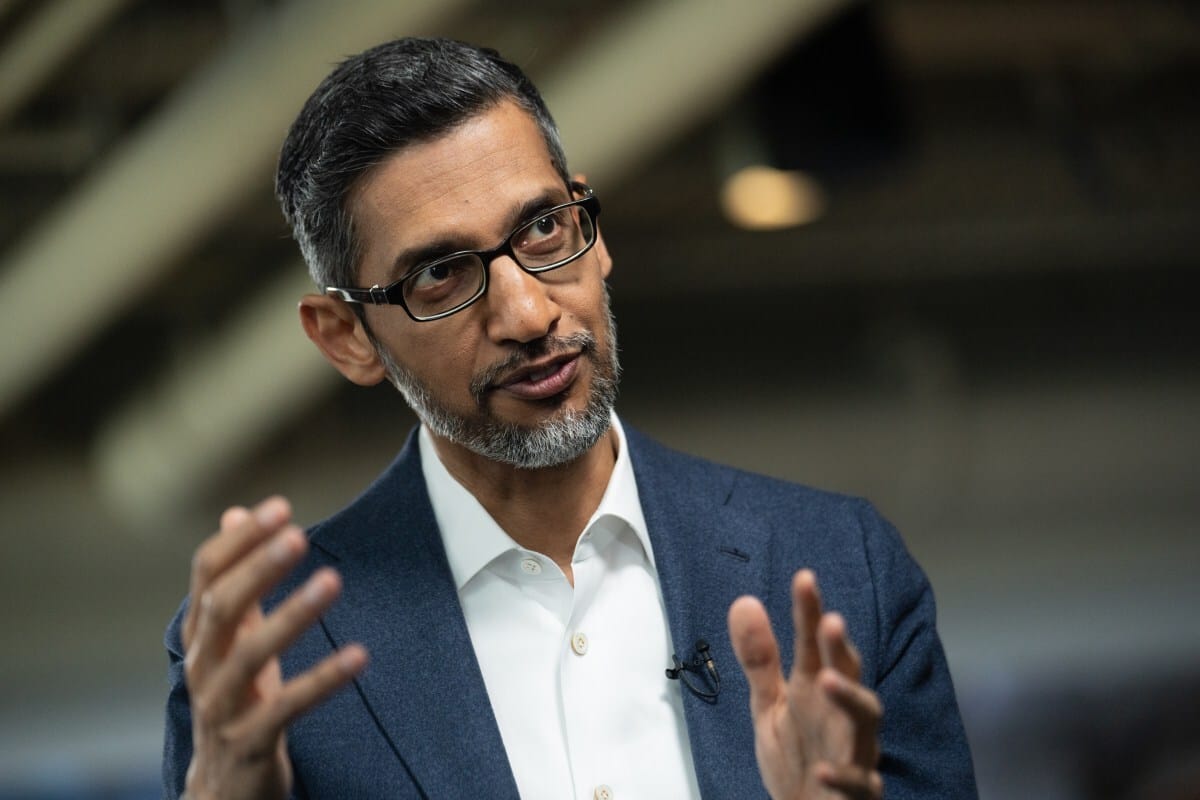- 6thWave AI Insider
- Posts
- Trump's Strategy for U.S. Leadership in AI Development
Trump's Strategy for U.S. Leadership in AI Development
AI Frontiers: Tech, Politics, and the Race for Innovation

Tech, Politics, and the Race for Innovation
Buckle up, AI enthusiasts! Today's landscape is electric – from Trump's bold AI strategy to Google's groundbreaking collaborations. We're diving deep into the tech revolution that's reshaping our world. Ready for the insider scoop? 🚀🤖 [Podcast Link]
(Read Time: 5 Minutes)
Today's Edition
Top Stories
Trump's Strategy for U.S. Leadership in AI Development

Image Source: The Hindu
Understanding the AI Action Plan
President Trump's AI Action Plan aims to position the U.S. as a leader in artificial intelligence. While primarily affecting government agencies, it sends strong signals to enterprises about the future of AI adoption. The plan emphasizes speed, innovation, and the importance of aligning with government values. Analysts believe that the government's stance will influence how businesses develop and implement AI systems, potentially reshaping the entire ecosystem.
Key Details of the Plan
• The plan consists of three main pillars: accelerating AI innovation, building American AI infrastructure, and leading in international AI diplomacy.
• It directs agencies to collaborate with AI companies and prioritize investments in infrastructure and development.
• Open-source AI is explicitly supported, which may shift how companies approach model development.
• The plan also aims to streamline testing and evaluation processes for AI systems, reducing bureaucratic hurdles.
Significance of the Action Plan
This plan is crucial for enterprises as it indicates a shift towards faster AI adoption and development. As government policies shape the market, businesses must adapt quickly to stay competitive. While the plan does not provide comprehensive regulation, it lays the groundwork for future collaboration between the government and private sector. Companies that can navigate this evolving landscape will likely find new opportunities for growth and innovation, making it essential to stay informed and agile in response to these changes.
Trump's Blueprint for a Tech-Friendly Future
Image Source: Fast Company
Overview of the AI Action Plan
The newly released AI Action Plan by the Trump administration aims to boost the U.S. AI industry while limiting state regulations. This 28-page document, crafted by key figures like Secretary of State Marco Rubio and AI Czar David Sacks, outlines strategies to encourage AI development. It emphasizes a hands-off approach to regulation, promoting a favorable environment for tech companies. The plan targets the deletion of previous regulations that could hinder AI progress and seeks to influence state-level policies through federal funding conditions.
Key Details of the Plan
• The plan discourages state-level AI regulations by linking federal funding to the friendliness of state policies towards AI research and development.
• It proposes to lessen the Federal Trade Commission's role in consumer protection, allowing tech firms more freedom in their operations.
• The initiative recognizes the need for increased energy supply to support new data centers, suggesting large-scale development on federal lands.
• Tax incentives from the GOP’s One Big Beautiful Bill Act could significantly benefit major tech companies, enhancing their cash flow for AI investments.
Significance of the Action Plan
This AI Action Plan represents a significant shift towards minimal regulation in the tech industry, reflecting a broader strategy to maintain U.S. leadership in AI. By fostering an environment conducive to innovation, the administration hopes to attract investments and accelerate advancements in AI technology. The potential economic benefits for tech giants could lead to breakthroughs that address major societal issues, such as healthcare and poverty. However, the lack of regulatory oversight raises concerns about consumer protection and the ethical implications of unchecked AI development.
Trump's Bold AI Action Plan - A New Era for Innovation and Security

Image Source: TechCrunch
Overview of the AI Action Plan
The AI Action Plan introduced by the Trump administration marks a significant shift from previous cautious approaches, emphasizing rapid development and infrastructure for artificial intelligence. This plan aims to strengthen national security, enhance competition with China, and streamline regulations for tech companies. While it seeks to harness American innovation, it raises concerns about potential risks and environmental impacts. The focus is on building data centers and cutting bureaucratic hurdles, which may affect various industries and the average consumer.
Key Highlights of the Plan
• The administration prioritizes building AI infrastructure, including data centers on federal lands, even if it means bypassing some environmental regulations.
• Plans to deregulate AI will limit states' ability to impose their own regulations, tying federal funding to compliance.
• The strategy includes a strong emphasis on national security, aiming to prevent foreign adversaries from accessing advanced AI technologies.
• The administration seeks to promote open AI models while addressing safety and security concerns through federal research initiatives.
Importance of the AI Action Plan
This plan is significant as it positions the U.S. to lead in AI development while potentially sidelining environmental and ethical considerations. By investing heavily in AI infrastructure, the administration aims to create jobs and stimulate economic growth. However, the focus on deregulation and national security could lead to unintended consequences, such as increased pollution and the risk of biased AI systems. The implications for both the tech industry and consumers are profound, as the balance between innovation and responsibility is tested.
Google Teams Up with OpenAI - A Game-Changer in AI Cloud Services

Image Source: TechCrunch
Overview of the Partnership
Google CEO Sundar Pichai expressed enthusiasm about a new partnership with OpenAI, where Google Cloud will provide resources for training and serving AI models. This collaboration comes at a pivotal time as Google aims to enhance its AI capabilities, especially in light of competition from OpenAI's ChatGPT. The partnership marks a significant shift in Google’s strategy, focusing on AI development to maintain its position in the search market.
Key Details
• Google Cloud revenue increased significantly to $13.6 billion in Q2 2025, showing growth in AI-related services.
• OpenAI has added Google Cloud to its list of cloud service suppliers, joining Microsoft and Oracle.
• Google provides a large supply of Nvidia GPU chips and its own TPU chips, making it an attractive partner for AI labs.
• The partnership could present risks, as OpenAI may use Google’s infrastructure to challenge Google Search directly.
Importance of the Collaboration
This partnership is crucial as it highlights the evolving landscape of AI and cloud computing. Google’s investment in OpenAI reflects a strategic move to bolster its cloud business while navigating the competitive pressures from AI startups. The collaboration could reshape how AI services are delivered and utilized, impacting both companies’ futures. As Google adapts to these changes, the long-term implications of this partnership could redefine the tech industry, especially concerning AI innovation and competition in the search market.
Balancing AI Leadership and Export Controls - The Trump Administration's Dilemma

Image Source: TechCrunch
Overview of AI Action Plan
The Trump administration aims to maintain the U.S. as a leader in AI technology while ensuring that its advancements do not benefit foreign adversaries. The recently released AI Action Plan outlines strategies to achieve this balance. The plan emphasizes the need for the U.S. to leverage its current strengths in data centers and computing hardware, but also highlights the necessity of preventing competitors from exploiting American innovations.
Key Points of the Plan
• The administration plans to strengthen AI chip export controls through innovative strategies.
• It recommends collaboration between government bodies and the AI industry to verify chip locations.
• The plan suggests enforcing restrictions on chip exports and aligning with global allies on these measures.
• Past inconsistencies in the administration's export strategies raise questions about the feasibility of these plans.
Significance of the Strategy
The implications of the AI Action Plan are profound. By focusing on export controls, the U.S. aims to protect its technological edge in AI while fostering international cooperation. However, the lack of specific guidelines raises concerns about the effectiveness of these measures. The ongoing contradictions in policy highlight the challenges the administration faces in creating a cohesive strategy. As global competition in AI intensifies, the U.S. must navigate these complexities to maintain its leadership position and ensure that its innovations do not inadvertently empower rivals.
Editor’s Picks
Google launches Web Guide, an AI tool to better organize search results.
Google is launching an AI feature for virtual clothing try-ons and updated price alerts.
Amazon’s acquisition of Bee signals a strong interest in the AI wearables market.
Brands must optimize for AI citation to maintain visibility in an AI-driven world.
Researchers reveal significant bias in AI models used in healthcare, risking unequal treatment.
A new AI coding challenge reveals its first winner, setting a high bar for software engineering.
Memories.ai is transforming video analysis with its AI platform that can process millions of hours of footage.
YouTube enhances Shorts with new AI tools, empowering creators to innovate.
YouTube enhances Shorts with new AI tools, empowering creators to innovate.
Microsoft’s evaluation of AI usage signals a shift in workplace expectations, but without proper training and guidelines, employees face challenges.
SecurityPal automates security assessments, merging AI with human expertise for faster, more accurate vendor evaluations.
AI-generated low-quality reports are flooding cybersecurity platforms, complicating vulnerability assessments.
The battle for AI neutrality intensifies as political agendas shape technology.
Napkin transforms text into engaging visuals, making communication fun and accessible.
Featured AI Jobs
Global Robotics and Physical AI Leader, Director
EY · Boston, MA (On-site)
Director, Innovation Engineering: Office of Hybrid Cloud CTO
Hewlett Packard Enterprise · Rhode Island, United States (On-site)
Lensa · Las Vegas, NV (On-site)
Lensa · Houston, TX (Remote)
Sr Generative AI Strategist, Generative AI Innovation Center
Amazon Web Services (AWS) · San Francisco, CA
Robotics and Artificial Intelligence
ORAU · West Point, NY
6thWave AI Insider is the go-to AI digest for the movers and shakers. Thousands of tech visionaries, global innovators, and decision-makers—from Silicon Valley to Wall Street—get their daily AI fix from our AI News Hub and Newsletter. We're the fastest-growing AI-centric News Hub on the planet.
Stay curious, stay ahead!
Ava Woods, Your AI Insider at 6thWave.
P.S. Enjoyed this AI knowledge boost? Spread the digital love! Forward this email to a fellow tech enthusiast or share this link. Let's grow our AI-savvy tribe together!
P.P.S. Got a byte of feedback or a quantum of innovation to share? Don't let it get lost in the noise—reply directly to this email. Your input helps upgrade my algorithms!